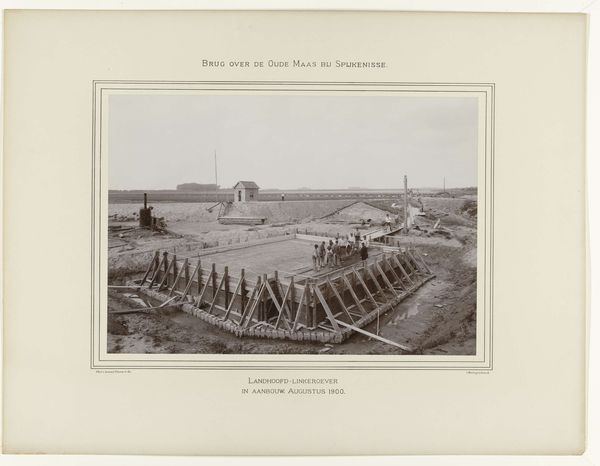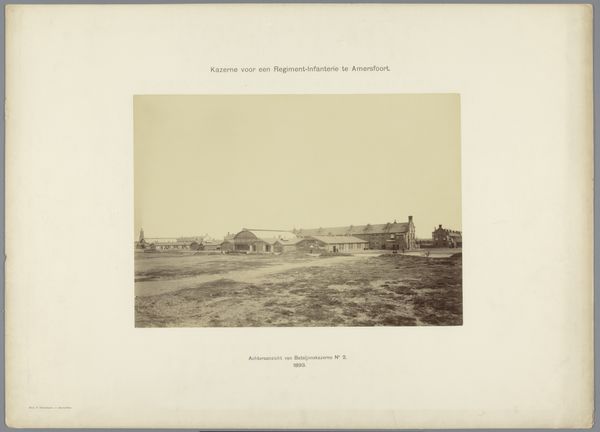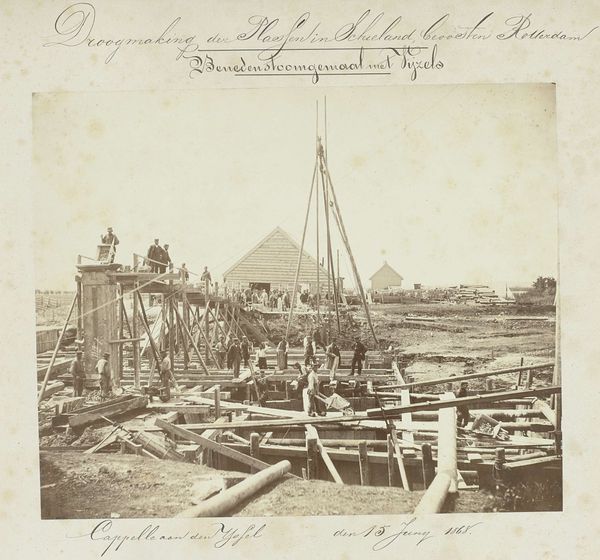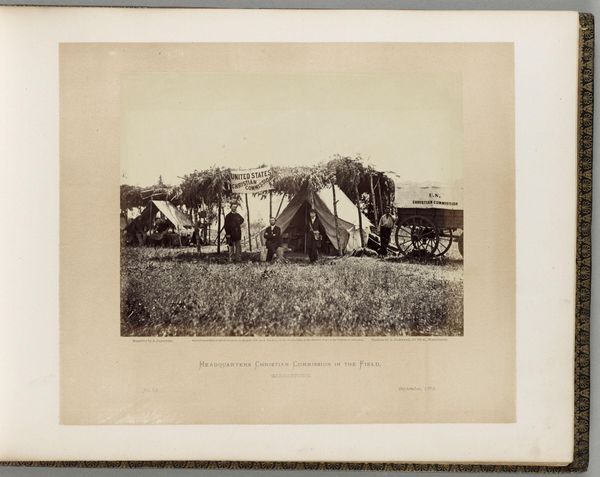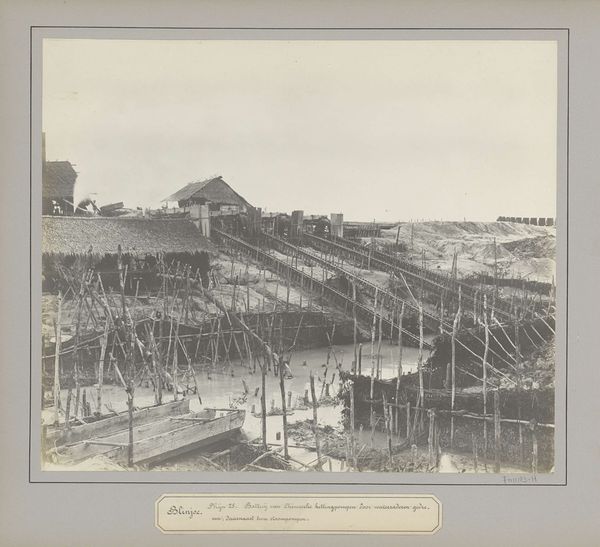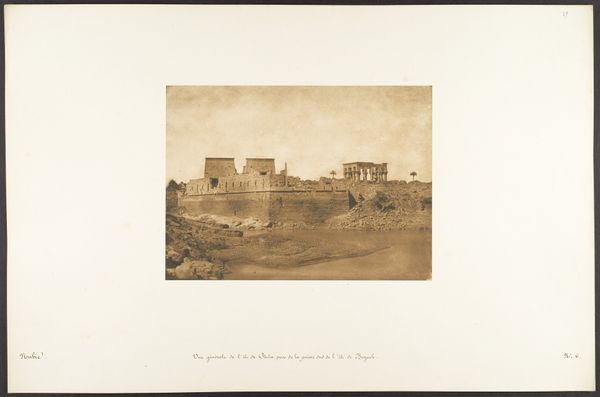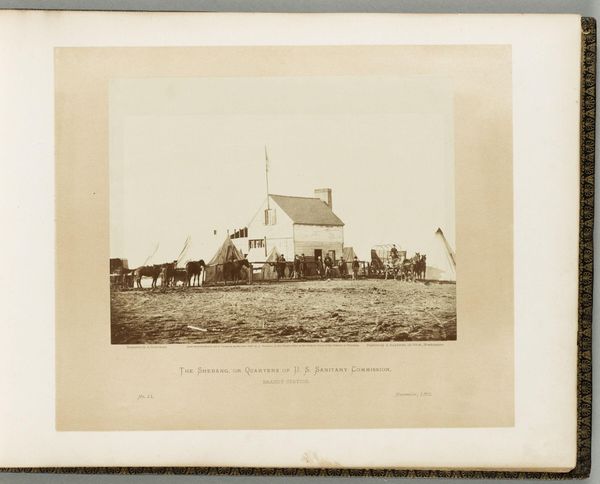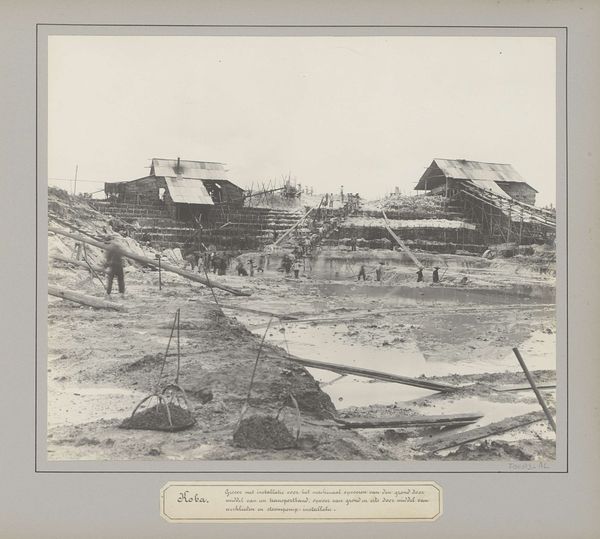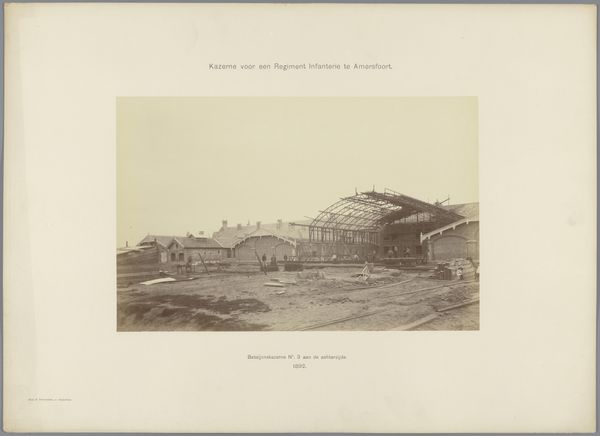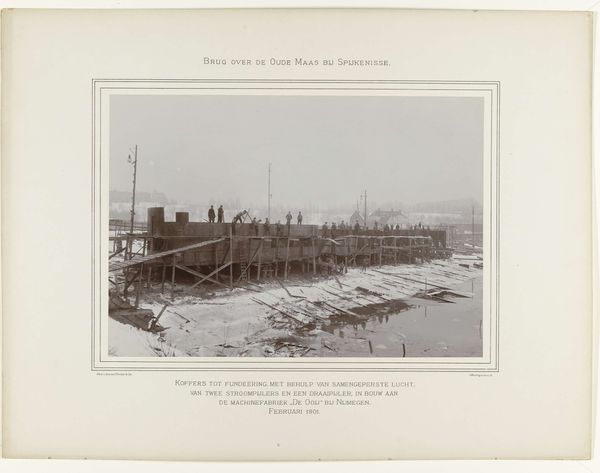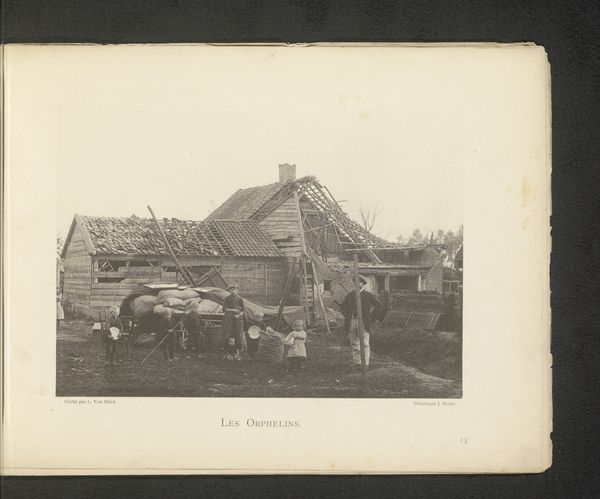
Bouw van het landhoofd voor de brug over de Oude Maas aan de rechteroever bij Spijkenisse 1900 - 1911
0:00
0:00
print, photography, gelatin-silver-print
# print
#
landscape
#
photography
#
constructionism
#
gelatin-silver-print
#
cityscape
#
realism
Dimensions: height 293 mm, width 419 mm
Copyright: Rijks Museum: Open Domain
Editor: Here we have "Bouw van het landhoofd voor de brug over de Oude Maas aan de rechteroever bij Spijkenisse," a gelatin silver print from circa 1900-1911, credited to Arnaud Pistoor & Zoon. The image seems to depict the construction of a bridge support, and I'm struck by its composition, the strong horizontals and verticals battling for dominance. How do you interpret this work from a formal perspective? Curator: The photograph presents a rigorous study in form. Note the interplay between the textures of the raw materials—the rough-hewn stone and the skeletal wood scaffolding. These tactile elements are crucial to the photographic process of translating the real world onto a two-dimensional plane. The photographic realism almost feels hyperreal in the way the details and materials seem very deliberate, would you agree? Editor: Yes, absolutely. The crisp detail does lend it that feel. What’s interesting, though, is how that almost hyper-detailed realism works in tension with the softer atmospheric perspective. The building in the background is quite soft, giving the image depth, a calculated compositional strategy? Curator: Precisely. It controls the viewer's gaze and forces a deeper contemplation on how line and shadow interact, defining three-dimensional space through essentially flat mediums and tonal gradations, reinforcing this interplay with materiality. This is why the work has significance. Editor: I see, so its value lies less in the historical document it provides and more in the conscious orchestration of visual elements? Curator: Yes, because it challenges our understanding of representation, perception and medium specificity, regardless of what we know about this structure itself. The bridge, its intended use; such considerations are not required. The structural qualities themselves are what offer intellectual depth. Editor: Fascinating. I'll definitely be thinking about how photographic realism interacts with abstract compositional elements from now on. Thank you. Curator: And I, how photographic techniques can be more about artistic choices. Thank you for your input.
Comments
No comments
Be the first to comment and join the conversation on the ultimate creative platform.

